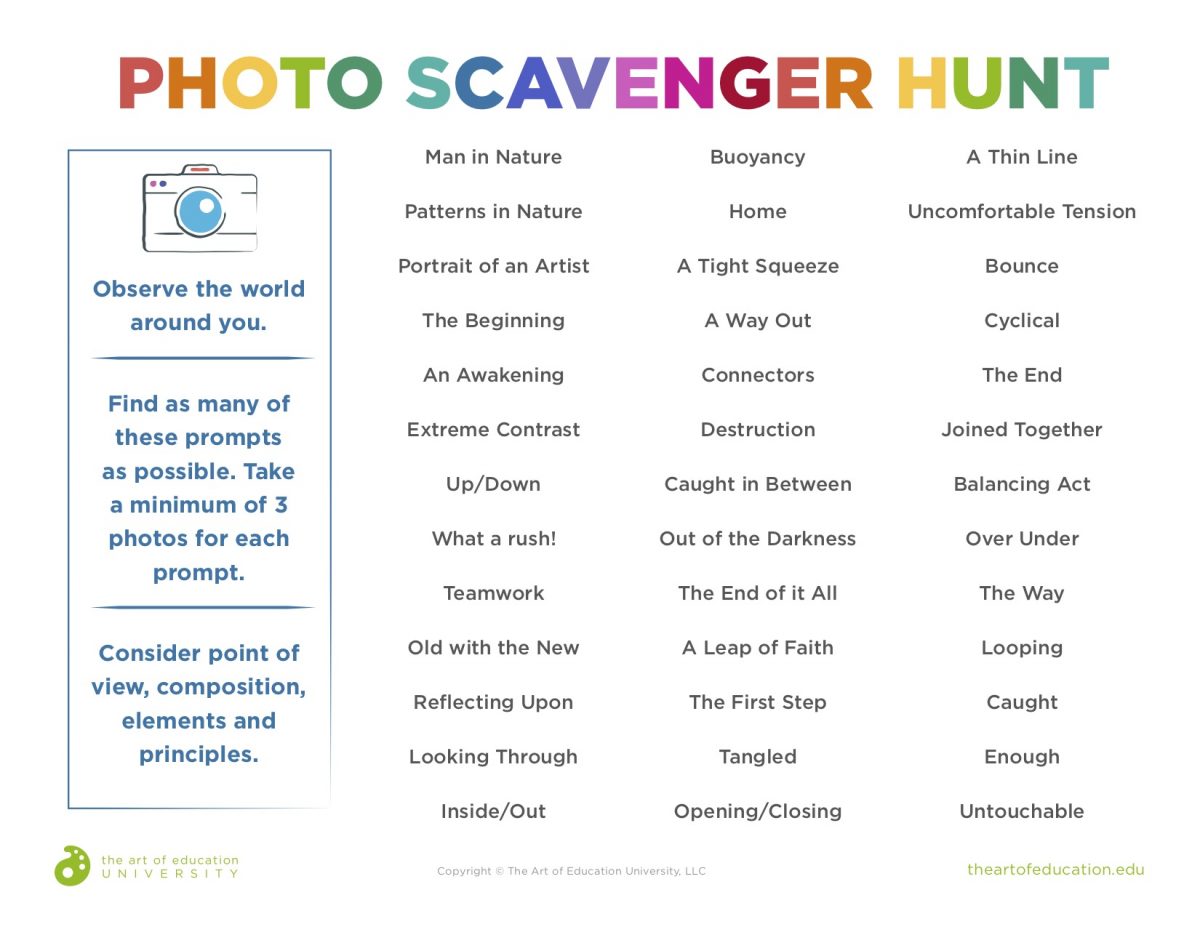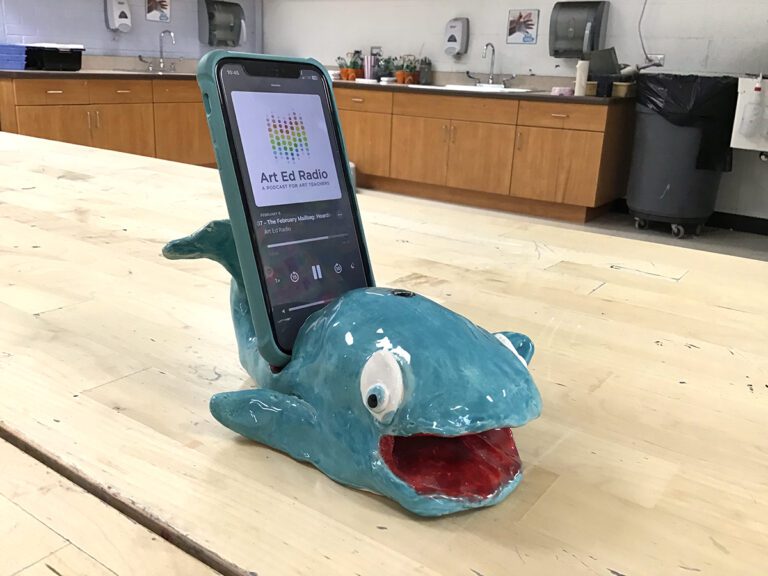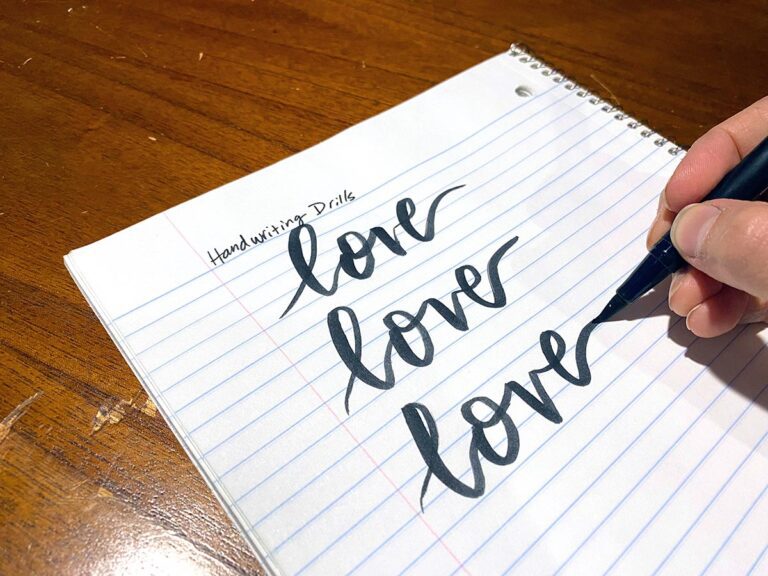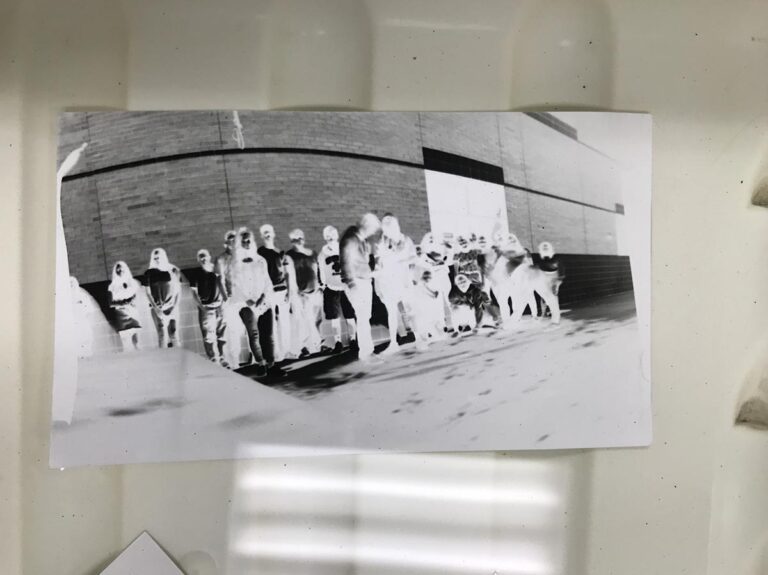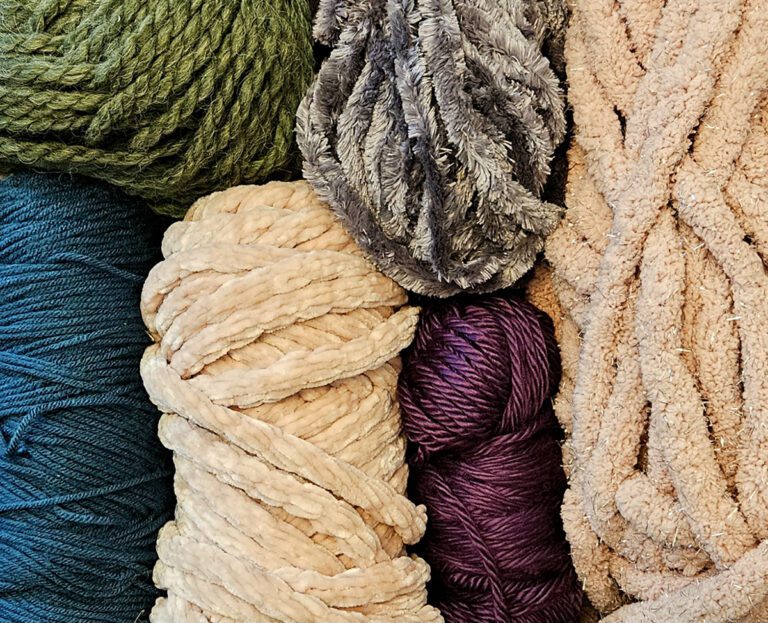Art Education and the Coronavirus (COVID-19)
When setting up your classroom for online learning, it’s important to rethink the “how” and the “what” of your curriculum. While some might be teaching an art survey type of course, which lends itself to a variety of options, others are left wondering, what now? Teaching ceramics or metalsmithing is just not going to happen as it would in the classroom. Finding a balance in preparing our students for next year and beyond with skills that can carry throughout their life and keep them creating is a challenge. Teaching a traditional drawing course might allow you to continue to build skills, but when soldering at home isn’t an option, it’s time to rethink the purpose of your art curriculum and teaching online.
When changing your teaching location or moving to online learning, it is essential to be grounded in your foundational teaching philosophy. Personally, teaching for creativity is always at the root of what I teach. Regardless of what my students will become or where they will go in their careers, creative thinking will help them approach life with curiosity and engage with the world in deep and meaningful ways.
Teaching for creativity means I want students to:
- Be creative thinkers.
- Learn creative thinking skills that apply outside of the art room.
- Use their heads and their hands to solve a problem.
- Consider and identify problems that need solving.
- Practice thinking outside-the-box when given constraints.
- Generate ideas, consider many options, and collaborate for feedback.
So, how do you ensure you are engaging your students with creativity while away from the classroom?
Take a look at these three categories of creative thinking that can help set you and your students up for success:
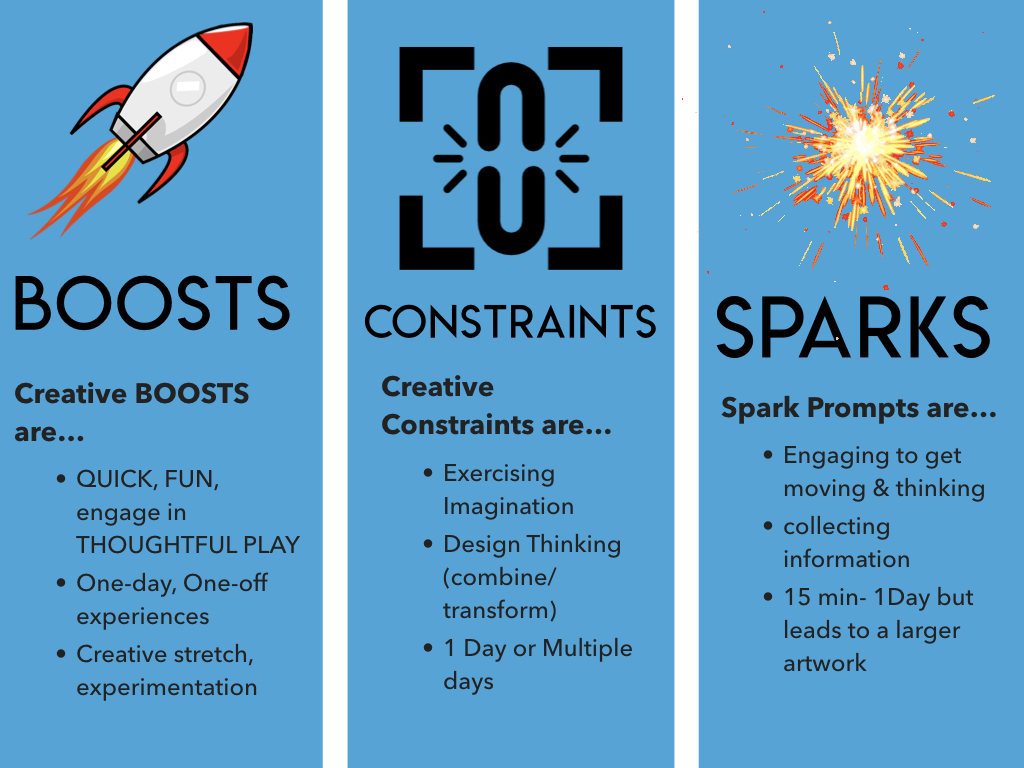
Creative Boosts
Creative Boosts are quick and fun exercises that engage in thoughtful play. These are usually one-day, one-off experiences to incorporate in the classroom or out. Boosts provide a creative stretch when working through a longer artwork. They are also rooted in exploration and experimentation, such as creative uses for unconventional art media.
Examples of Creative Boosts:
Scavenger Hunts
100 Sketchbook Prompts
50 Visual Journal Prompts
Silly Drawing Prompts
Download a great scavenger photo hunt here.
A few tips to remember when transferring Creative Boosts into your online teaching practices:
- Ground yourself in your big-picture outcomes. For example, if you didn’t teach them how to “technically” draw, then don’t expect more than some sketches on a looseleaf piece of paper. The point of these exercises is more about play than technical skills.
- Set up new expectations of what this all looks like. If you want your students to produce more than one sketch, make sure to tell them how many you expect, as well as how to annotate their work.
- When it comes to discovering materials at home, it will take students longer than you expect. When we are in the classroom, we often provide a range of materials to experiment with. At home, you are not only asking students to create but also to identify materials they could explore with.
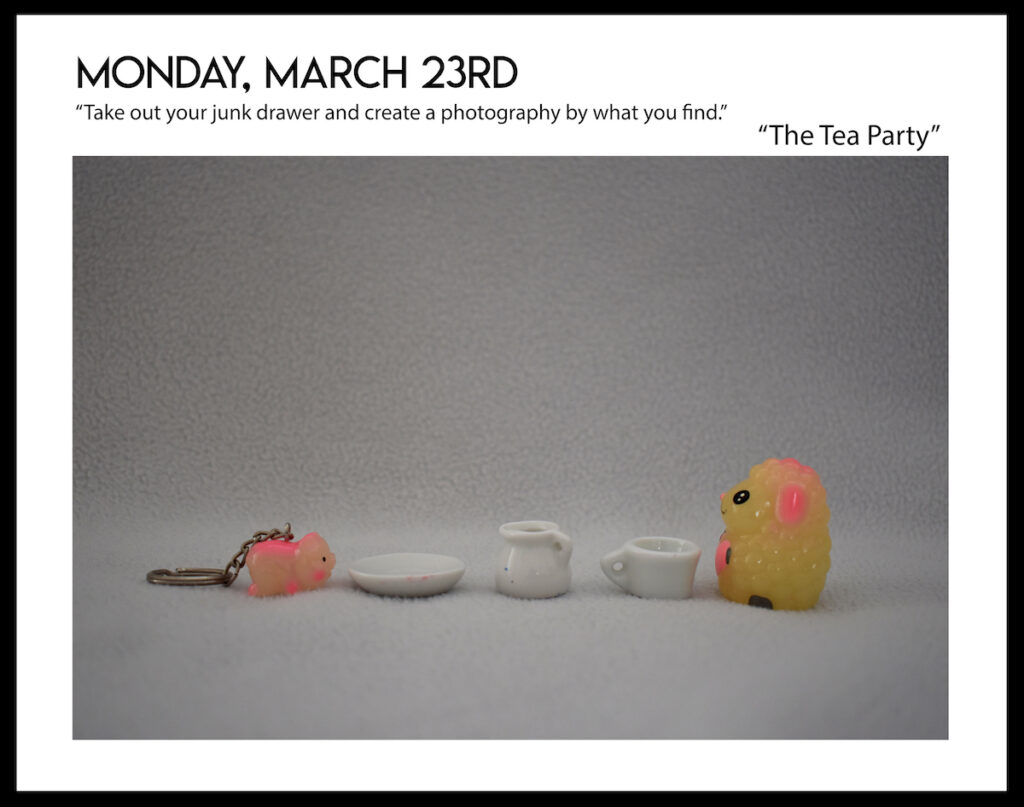
Constraint Challenges
Constraint Challenges exercise the imagination through unrealistic prompts and design thinking challenges. Consider how your students could combine and transform to push limits and boundaries. Especially in a time when materials may not be available, the imagination is boundless. Constraint Challenges usually take one day to a week. Students could spend thirty minutes brainstorming ideas, or five days folding paper and assembling cardboard.
Examples of Constraint Challenges:
- Unimaginable Item: Create a prototype (sketch or create) for an unimaginable need such as “Design a treadmill for a worm.” List the choices and constraints. Pitch your product with a short video.
- Paper RePurpose: Create a “new and improved” functional item out of paper. Document your item being used for its new purpose.
- Build a Fort: Create a fort optimal for hours of video-gaming. Consider what materials are most conducive for longevity as well as maximum laziness. Use only materials that are readily available in your home.
Here are a few tips for Constraint Challenges:
- Push students to think about real situations without constraints. For example, get them to think about available materials or gravitational pull.
- Try giving them a fantastical problem. Ask them to identify both choices and existing constraints.
- Give students a choice of materials to create maquettes or develop prototypes. Especially while at home, you never know what students might have at their disposal. If you give a constraint such as material, allow for options. Instead of “create using cardboard,” ask students to identify their material choice and limit them to how much of one material they can use.
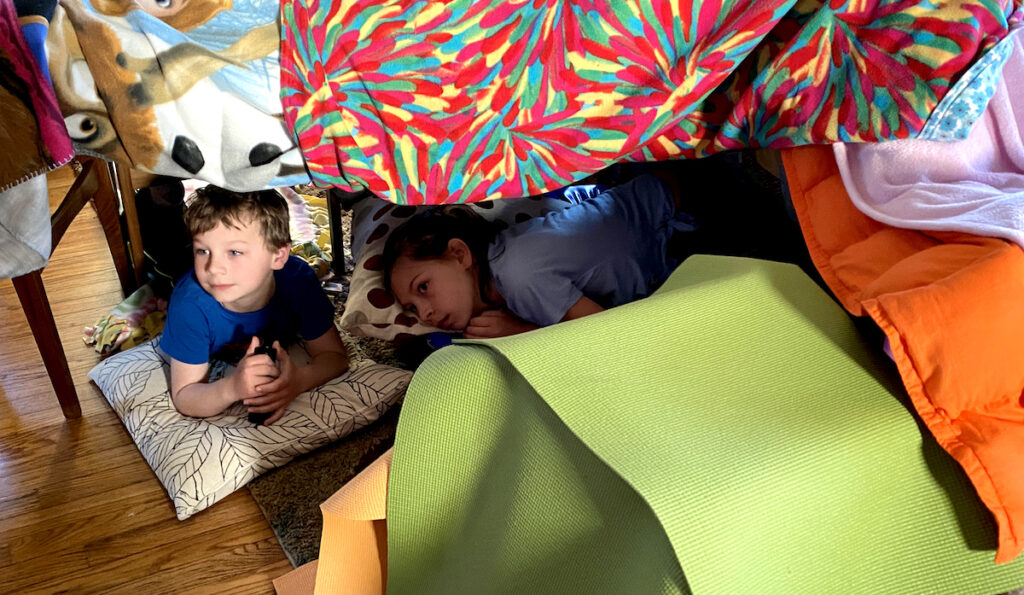
Creative Sparks
Creative Sparks are the little push of creativity students can use to inspire a more developed artwork. These are short exercises from fifteen minutes to one day. Students use these to get moving and thinking, to collect information, and to engage their next creation.
Examples of Creative Sparks:
- Color Palette Binge: Watch your favorite movie or T.V. series. Make a color swatch book of the main colors you find in a particular scene or throughout the movie. Create an artwork that responds to your new color palette.
- Sound Off: Go outside and document all the sounds you hear. Or make a sensory journal to describe all of your senses in a new experience. Make sketches, jot down notes, record sounds, take photos. Using this new collection, create a poem or short story. Then, make an artwork.
- Mundane How-Tos: Make a PBJ sandwich, tie your shoes, teach someone how to whistle. Document the steps it takes to teach this ordinary task. Then, make an instructional document to teach someone how to do a mundane task. Create a zine, a comic page, an illustrated artwork, or a video.
Some tips for your Creative Sparks:
- Give your students a series of sparks for all to complete. Then, they can choose which spark interested them the most to pursue a developed artwork. Or, ask your students to review all the Spark options and choose what interests them the most to try out before creating an artwork.
- Sparks are a great way to demonstrate the Creative Process. Through the planning phase, students explore and use these as planning for ideas and documenting as they develop further into their work.
- Give students a choice of documentation. Students may be able to not only sketch out ideas, but also make short videos, record audio, make a timelapse, and more.
With so many changes happening at once, continue to stay grounded in your teaching philosophy. Continue to find ways to engage with your students, help take their minds off of the more serious news, and help them create away from the computer screen. Remember to always consider your teaching options through the lens of equity and access for your students. Now is a perfect time to demonstrate the importance of creative thinking when changing to online learning. Just think, you are not only supporting your students in creating artwork but also providing them essential skills to think outside-the-box as they solve our world’s next big problems.
Can you identify your philosophical foundation for teaching in your art room? How does that help you remain grounded when your world turns upside down?
In what ways are you teaching creativity through remote learning?
How can you schedule Creativity Boosts, Constraint Challenges, and Creative Sparks in your curriculum?
Magazine articles and podcasts are opinions of professional education contributors and do not necessarily represent the position of the Art of Education University (AOEU) or its academic offerings. Contributors use terms in the way they are most often talked about in the scope of their educational experiences.
